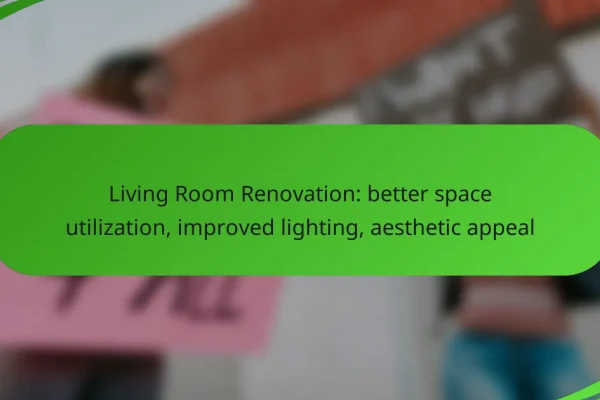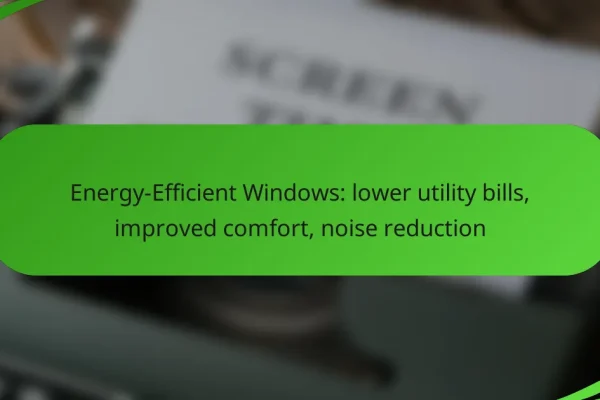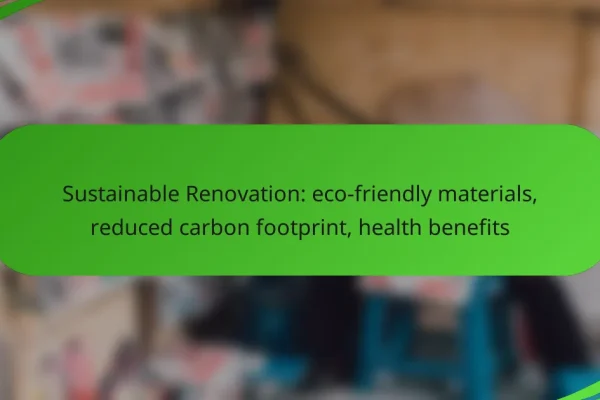What are the outcomes of kitchen renovations?
Kitchen renovations can lead to significant improvements in home value, functionality, and energy efficiency. Homeowners often see a return on investment through increased property worth and enhanced living experiences.
Increased home value
One of the primary outcomes of kitchen renovations is an increase in home value. Upgrading key features such as countertops, cabinets, and appliances can elevate the market appeal of a home. Typically, homeowners can expect a return on investment ranging from 60% to 80% for kitchen remodels, depending on the extent of the renovations and local market conditions.
To maximize value, focus on modern, high-quality materials and finishes that align with current design trends. Avoid overly personalized choices that may not appeal to future buyers.
Improved functionality
Kitchen renovations often enhance the functionality of the space, making it more efficient for cooking and entertaining. By reconfiguring layouts, adding islands, or incorporating smart storage solutions, homeowners can create a more user-friendly environment.
Consider the workflow in the kitchen, often referred to as the “kitchen triangle,” which connects the stove, sink, and refrigerator. Ensuring these elements are easily accessible can significantly improve daily tasks.
Enhanced aesthetics
Renovating a kitchen can dramatically enhance its aesthetics, making it a more inviting space. New designs, colors, and materials can transform a dated kitchen into a modern masterpiece. Popular trends include open shelving, bold backsplashes, and contemporary lighting fixtures.
When selecting aesthetics, consider the overall style of the home to ensure a cohesive look. Neutral tones with pops of color often appeal to a wider audience.
Energy efficiency upgrades
Many kitchen renovations include energy efficiency upgrades, which can lead to lower utility bills and a reduced carbon footprint. Replacing old appliances with Energy Star-rated models, installing LED lighting, and improving insulation are common upgrades.
Investing in energy-efficient solutions not only benefits the environment but can also qualify homeowners for rebates or tax credits, depending on local regulations.
Better space utilization
Effective kitchen renovations can improve space utilization, making the area feel larger and more organized. This can be achieved through strategic design choices like open floor plans, multi-functional furniture, and optimized storage solutions.
Consider incorporating pull-out shelves, corner cabinets, and vertical storage to maximize every inch of space. This approach is particularly beneficial in smaller kitchens, where efficient use of space is crucial.
What are the outcomes of bathroom renovations?
Bathroom renovations can significantly enhance both the functionality and aesthetics of a home. Key outcomes include increased property value, improved comfort, and modernized features that cater to contemporary needs.
Higher resale value
One of the most notable outcomes of bathroom renovations is the potential for a higher resale value. On average, a well-executed bathroom remodel can recoup a substantial portion of its cost, often ranging from 60% to 70% of the investment. This makes it a smart choice for homeowners looking to sell.
To maximize resale value, focus on mid-range updates rather than luxury upgrades, as buyers typically prefer functional and appealing spaces over extravagant features.
Improved comfort and convenience
Renovating a bathroom can greatly enhance comfort and convenience for daily use. Upgrades such as better lighting, improved layout, and additional storage can make the space more user-friendly. For instance, replacing a small shower with a larger tub can provide a more relaxing experience.
Consider incorporating features like heated floors or dual sinks to further elevate comfort levels, especially in shared bathrooms.
Modernized fixtures
Updating fixtures is a key outcome of bathroom renovations, leading to a more modern and cohesive look. Replacing outdated faucets, showerheads, and lighting can dramatically change the overall aesthetic. Opt for energy-efficient fixtures that not only look good but also reduce water and energy consumption.
Choosing contemporary designs can also enhance the visual appeal, making the bathroom feel fresh and inviting.
Water efficiency improvements
Bathroom renovations often focus on water efficiency, which can lead to significant savings on utility bills. Installing low-flow toilets, faucets, and showerheads can reduce water usage by up to 30% without sacrificing performance. This is not only environmentally friendly but also appealing to eco-conscious buyers.
Look for fixtures that meet WaterSense standards to ensure you are choosing products that promote water conservation.
Enhanced safety features
Safety is a critical consideration in bathroom renovations, particularly for families and older adults. Adding features like grab bars, non-slip flooring, and improved lighting can reduce the risk of accidents. These enhancements not only make the space safer but can also be a selling point for potential buyers.
Consider incorporating walk-in showers or benches to improve accessibility, making the bathroom more user-friendly for everyone.
What are the outcomes of basement renovations?
Basement renovations can significantly enhance a home’s usability and value. Homeowners often see benefits such as increased living space, potential rental income, and improved energy efficiency.
Increased living space
Renovating a basement transforms it into functional living space, which can serve various purposes such as a family room, home office, or guest suite. This added area can be particularly valuable in homes where space is limited, effectively expanding the usable square footage.
Consider designing the space to accommodate multiple functions, which can maximize its utility. For example, a basement can be set up with a fold-out sofa for guests and a desk for work, catering to both leisure and productivity.
Potential rental income
A finished basement can be converted into a rental unit, providing a steady income stream. Many homeowners choose to create a separate entrance and kitchenette to attract tenants, which can significantly offset mortgage costs.
Before renting, ensure compliance with local zoning laws and regulations regarding rental properties. In some areas, you may need to obtain permits or meet specific safety standards.
Improved home functionality
Basement renovations can enhance the overall functionality of a home by providing additional storage, a laundry area, or recreational space. This can help declutter the main living areas, making the home more organized and enjoyable.
When planning the renovation, think about your family’s needs. For instance, if you have children, incorporating a playroom can keep toys contained and create a dedicated space for activities.
Enhanced property value
Investing in a basement renovation often leads to an increase in property value. Homes with finished basements typically sell for more than those without, as buyers appreciate the extra living space and versatility.
To maximize your return on investment, focus on quality finishes and ensure the renovation aligns with current market trends. A well-designed basement can be a strong selling point when listing your home.
Better insulation and energy efficiency
Renovating a basement can improve insulation, leading to better energy efficiency. Properly insulated walls and floors can help maintain comfortable temperatures and reduce heating and cooling costs.
Consider using energy-efficient materials and systems, such as insulated windows and energy-efficient lighting, to further enhance the basement’s performance. This not only benefits your utility bills but also contributes to a more sustainable home.
What are the outcomes of exterior renovations?
Exterior renovations can significantly enhance a property’s value, functionality, and aesthetic appeal. These improvements often lead to increased marketability and can yield a strong return on investment.
Boosted curb appeal
Boosted curb appeal refers to the enhanced visual attractiveness of a home from the street. This is crucial as it creates a positive first impression for visitors and potential buyers alike.
Common exterior renovations that improve curb appeal include fresh paint, new siding, updated landscaping, and enhanced entryways. Simple changes like adding outdoor lighting or a new front door can dramatically elevate the overall look.
To maximize curb appeal, focus on maintaining a cohesive design that complements the neighborhood. Consider local trends and preferences, as homes in urban areas may benefit from modern aesthetics, while rural properties might favor traditional styles.













